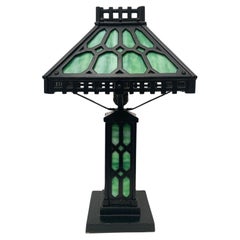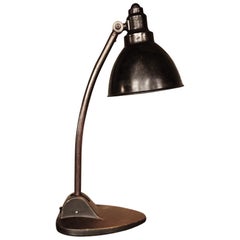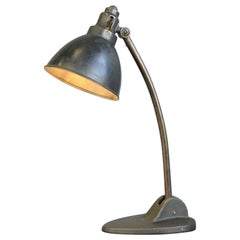Kandem 573
Vintage 1920s German Bauhaus Table Lamps
Steel
People Also Browsed
Antique 19th Century French French Provincial Table Lamps
Iron
Antique Early 1900s American Arts and Crafts Table Lamps
Wrought Iron
Antique Mid-19th Century British Industrial Table Lamps
Metal, Iron
Vintage 1920s French Art Deco Table Lamps
Iron
Vintage 1920s French Art Deco Table Lamps
Bronze
Vintage 1920s Belgian Art Deco Table Lamps
Metal, Copper
Early 20th Century French Art Deco Table Lamps
Metal, Iron
Early 20th Century French French Provincial Table Lamps
Faience
Early 20th Century French Industrial Side Tables
Iron, Wrought Iron
Vintage 1920s German Art Deco Table Lamps
Nickel
Vintage 1910s American Arts and Crafts Table Lamps
Iron, Brass
Antique 19th Century Side Tables
Marble, Iron
Early 20th Century American Industrial Industrial and Work Tables
Iron
Early 20th Century French Art Deco Table Lamps
Aluminum, Iron, Chrome
Antique 19th Century French Table Lamps
Iron
Antique 1830s English End Tables
Iron
Recent Sales
Vintage 1920s German Bauhaus Table Lamps
Steel, Iron
Vintage 1920s German Bauhaus Table Lamps
Steel
Vintage 1920s German Bauhaus Table Lamps
Steel
Kandem for sale on 1stDibs
Among the earliest lighting manufacturers in Germany, Kandem Leuchten GmbH embodies the progressive philosophy of the Bauhaus school.
In the early 20th century, the company’s popularity skyrocketed as a result of its innovative engineering and forward-looking visual design. Kandem popularized many features and forms that prominently characterize the lighting designs of today — such as the bell-shaped head and forward-foot base, which are common attributes of many table lamps.
German mechanics and good friends Max Körting and Wilhelm Mathiesen founded Kandem Leuchten GmbH as Körting and Mathiesen (K&M) in 1889. The two had developed a bond while working at a company in Leipzig and quickly found that they shared a similar professional vision with respect to design. They decided to go into business together in the then-fledgling field of electrical engineering.
Körting and Mathiesen set up shop and moved forward on their inaugural idea — creating a new type of arc lamp. To build capital for their project, the duo produced small electrical pieces such as light switches and doorbells that sold as quickly as they could make them. When they completed their arc lamp, it sold much more quickly than they expected. In order to increase their production, Körting and Mathiesen bought property and built a plant just outside of Leipzig. By this time the partners had rebranded the company as Kandem, which is an abbreviated combination of their surnames. However, colleagues and peers continued to refer to the company as Körting and Mathiesen.
In the 1920s, Kandem involved itself heavily in the Bauhaus design school, buying designs and enlisting the talents of the facility’s top artists at the student ateliers in Dessau — which was home to the institution following its move from Weimar, where Walter Gropius founded the school in 1919. Kandem partnered with notable Bauhaus product designers Hin Bredendieck and Marianne Brandt. After emigrating to the United States during the late 1930s, Bredendieck taught at the Institute of Design in Chicago and would later establish the Department of Industrial Design at Georgia Tech. Collectors celebrate Brandt for her boundless creativity and innovation in household products and accessories — many of which inspire designers to this day.
Kandem’s relationship with Bauhaus ended in 1933 when the school closed. The manufacturer continued to operate outside of Leipzig well into the mid-20th century, producing some of the most celebrated pieces in mid-century modern lighting design. Kandem now operates in Diez, Germany, as a subsidiary of the Dr. Fischer Group.
On 1stDibs, explore the vast array of Kandem table lamps, pendants and wall lights.
A Close Look at bauhaus Furniture
The Bauhaus was a progressive German art and design school founded by the architect Walter Gropius that operated from 1919 to 1933. Authentic Bauhaus furniture — sofas, dining chairs, tables and more — and the school’s followers married industrial and natural materials in simple, geometric forms. The goal of the Bauhaus was to erase the distinction between art and craft while embracing the use of new technologies and materials.
ORIGINS OF BAUHAUS FURNITURE DESIGN
- Art and design school established in Germany in 1919
- Promotion of a union of art, craft and technology
- Design intended for mass production
- School’s workshops focused on cabinetry, metalworking, typography, textiles and more
- Informed by De Stijl, Constructivism, Art Nouveau, Arts and Crafts, and modernism; influenced mid-century modernism, Scandinavian modernism
CHARACTERISTICS OF BAUHAUS FURNITURE DESIGN
- Emphasis on craft
- Simplicity, order, clarity and a prioritization of functionalism
- Incorporation of geometric shapes
- Minimalist and refined, little to no ornamentation
- Use of industrial materials such as tubular chrome, steel and plastic as well as leather, cane and molded plywood in furniture and other products
BAUHAUS FURNITURE DESIGNERS YOU SHOULD KNOW
- László Moholy-Nagy
- Ludwig Mies van der Rohe
- Anni Albers
- Josef Hoffmann
- Marcel Breuer
- Marianne Brandt
AUTHENTIC BAUHAUS FURNITURE ON 1STDIBS
The name Bauhaus is derived from the German verb bauen, “to build.” Under the school’s innovative curriculum, students were taught the fine arts, such as painting and sculpture, as well as practical skills like carpentry and metalworking.
The school moved from Weimar in 1925 to the city of Dessau, where it enjoyed its heyday under Gropius, then Hannes Meyer and Ludwig Mies van der Rohe. The period from 1932 to 1933 when it operated in Berlin under Mies was its final chapter. Despite its brief existence, the Bauhaus has had an enduring impact on art and design in the United States and elsewhere, and is regarded by many as the 20th century’s chief crucible of modernism.
The faculty roster at the Bauhaus reads like a who’s who of modernist creative genius — it included such artists as Paul Klee, Wassily Kandinsky and László Moholy-Nagy along with architects and designers like Mies and Marcel Breuer, who became known for his muscular brutalist-style concrete buildings in the postwar years. In 1925, while he was head of the Bauhaus carpentry workshop, Breuer gave form to his signature innovation: the use of lightweight tubular-steel frames for chairs, side tables and sofas — a technique soon adopted by Mies and others. Breuer’s Cesca chair was the first-ever tubular steel frame chair with a caned seat to be mass produced, while the inspiration for his legendary Wassily chair, a timeless design and part of the collection crafted to furnish the Dessau school, was the bike he rode around campus.
Bauhaus design style reflects the tenets by which these creators worked: simplicity, clarity and function. They disdained superfluous ornament in favor of precise construction. Seating pieces such as side chairs, armchairs or club chairs for example, were made with tubular metal or molded plywood frames, and upholstery was made from leather or cane. Above all, designs in the Bauhaus style offer aesthetic flexibility. They can be the elements of a wholly spare, minimalist space, the quiet foundation of an environment in which color and pattern come from one’s own collection of art and artifacts.
Today, from textiles to typefaces, architecture, furniture and decorative objects for the home, Bauhaus creations continue to have an outsize influence on modern design.
Find a collection of authentic Bauhaus furniture on 1stDibs.
Finding the Right table-lamps for You
Well-crafted antique and vintage table lamps do more than provide light; the right fixture-and-table combination can add a focal point or creative element to any interior.
Proper table lamps have long been used for lighting our most intimate spaces. Perfect for lighting your nightstand or reading nook, table lamps play an integral role in styling an inviting room. In the years before electricity, lamps used oil. Today, a rewired 19th-century vintage lamp can still provide a touch of elegance for a study.
After industrial milestones such as mass production took hold in the Victorian era, various design movements sought to bring craftsmanship and innovation back to this indispensable household item. Lighting designers affiliated with Art Deco, which originated in the glamorous roaring ’20s, sought to celebrate modern life by fusing modern metals with dark woods and dazzling colors in the fixtures of the era. The geometric shapes and gilded details of vintage Art Deco table lamps provide an air of luxury and sophistication that never goes out of style.
After launching in 1934, Anglepoise lamps soon became a favorite among modernist architects and designers, who interpreted the fixture as “a machine for lighting,” just as Le Corbusier had reimagined the house as “a machine for living in.” The popular task light owed to a collaboration between a vehicle-suspension engineer by the name of George Carwardine and a West Midlands springs manufacturer, Herbert Terry & Sons.
Some mid-century modern table lamps, particularly those created by the likes of Joe Colombo and the legendary lighting artisans at Fontana Arte, bear all the provocative hallmarks associated with Space Age design. Sculptural and versatile, the Louis Poulsen table lamps of that period were revolutionary for their time and still seem innovative today.
If you are looking for something more contemporary, industrial table lamps are demonstrative of a newly chic style that isn’t afraid to pay homage to the past. They look particularly at home in any rustic loft space amid exposed brick and steel beams.
Before you buy a desk lamp or table lamp for your living room, consider your lighting needs. The Snoopy lamp, designed in 1967, or any other “banker’s lamp” (shorthand for the Emeralite desk lamps patented by H.G. McFaddin and Company), provides light at a downward angle that is perfect for writing, while the Fontana table lamp and the beloved Grasshopper lamp by Greta Magnusson-Grossman each yield a soft and even glow. Some table lamps require lampshades to be bought separately.
Whether it’s a classic antique Tiffany table lamp, a Murano glass table lamp or even a bold avant-garde fixture custom-made by a contemporary design firm, the right table lamp can completely transform a room. Find the right one for you on 1stDibs.




